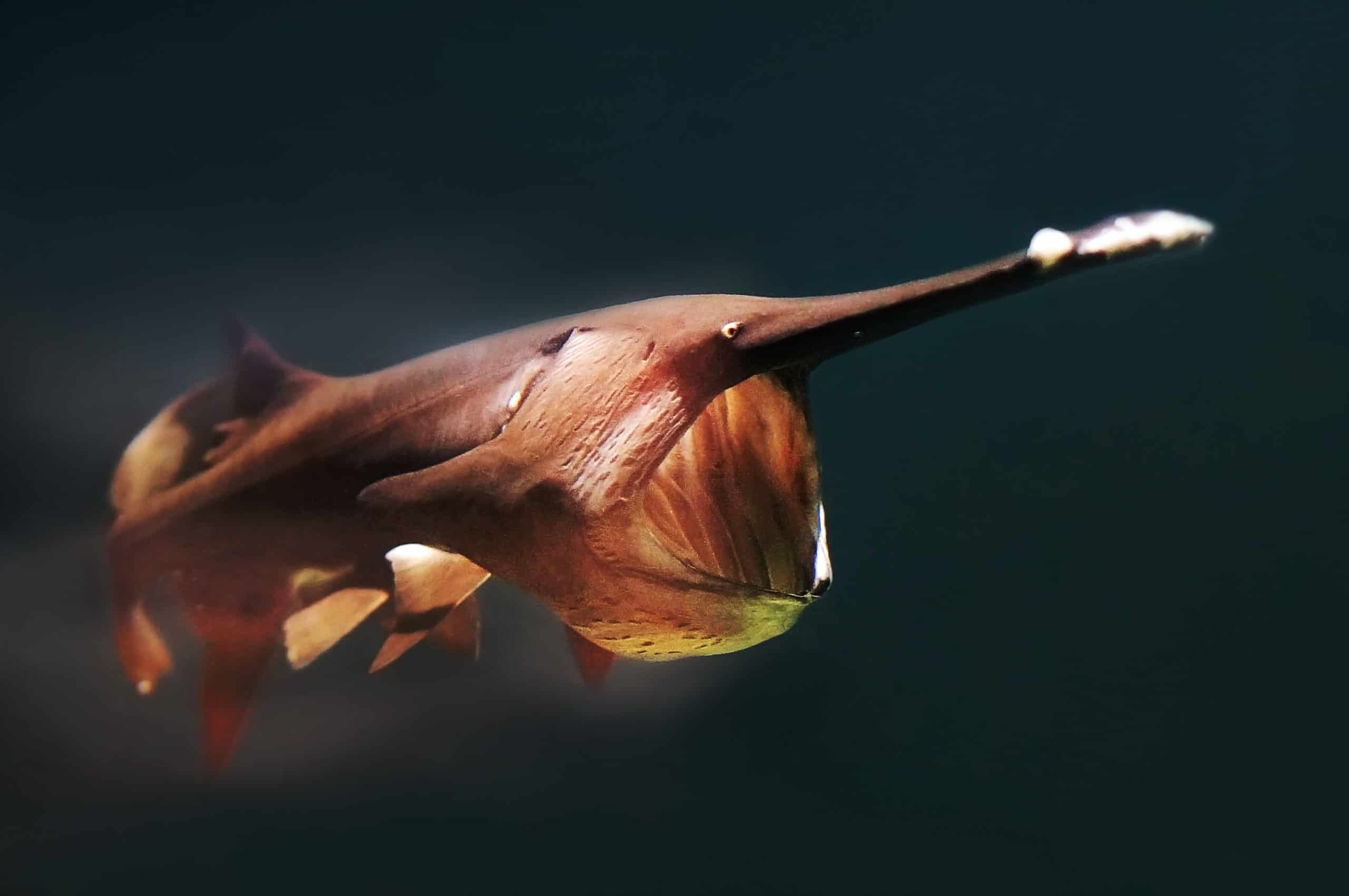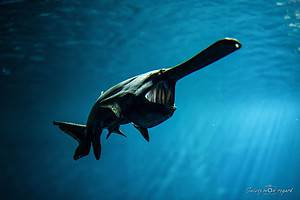The freshwater fish called paddlefish, commonly referred to as American paddlefish or Mississippi paddlefish, are most frequently observed in the open waters of the Mississippi River basin. These fish are members of the family Polyodontidae and the order Acipenseriformes, which also contain sturgeons. The only paddlefish species still in existence, the American paddlefish, are classified as Polyodon spathula in the scientific literature.
Fossil records have been used to identify four species; three were indigenous to North America and one to China. The American paddlefish is the only species left after the recent extinction of the Chinese paddlefish. While they may be usually compared to spoonbills, the truth is there is no difference between the two. This is because the paddlefish and the spoonbill refer to the same fish species. This article will dive deeper into the paddlefish vs. spoonbill background, their habitat, diet, appearance, and more.
Are Paddlefish and Spoonbill Different or the Same?
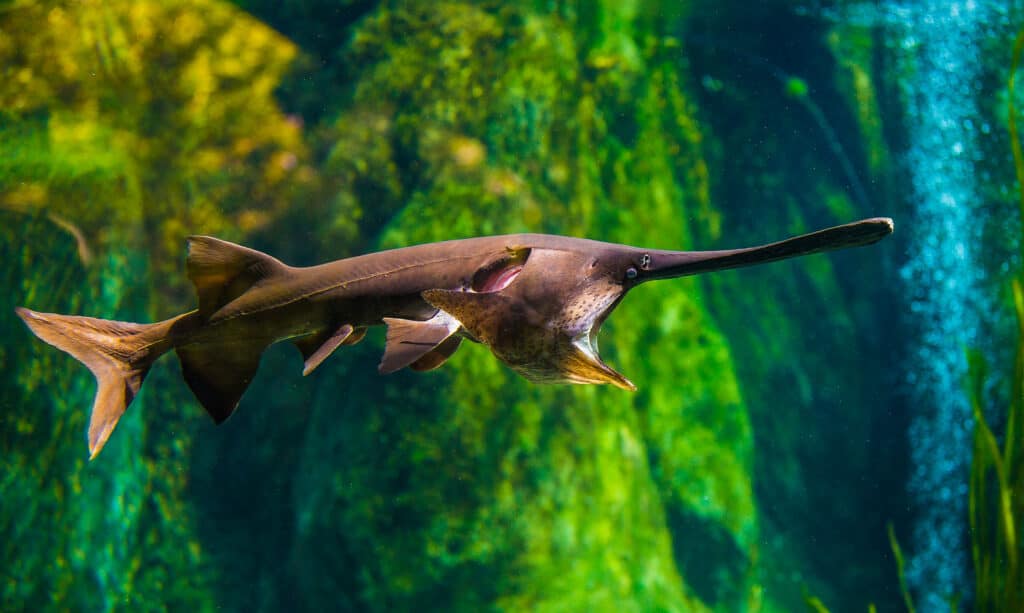
The paddlefish is also known as spoonbill.
©Saran Jantraurai/Shutterstock.com
Paddlefish and spoonbill may sound like entirely different fish species, but they are actually the same species with no difference at all. Spoonbill is a synonym used for paddlefish, which originated from the appearance of their snout. The paddlefish or spoonbill is characterized by a long snout that resembles a paddle or a spoon, thus the name.
Because some people confuse the paddlefish for a member of the catfish family, it is occasionally referred to as a spoonbill cat or shovelnose cat. It is one of the four native cartilaginous fish in Texas, along with brook lamprey, shovelnose sturgeon, and chestnut lamprey.
Paddlefish vs. Spoonbill: Appearance
The American paddlefish, simply known as paddlefish, is an ancient freshwater fish with a cartilaginous skeleton related to sturgeons. The fish measures around 5 feet long and 60 pounds, and the largest paddlefish ever caught was 7.1 feet long, 45.5 inches wide, and weighed more than 198 pounds. It was caught in Iowa in 1916.
With a long, flat blade-like snout extending nearly one-third of its body’s length, the paddlefish is known for its gray, shark-like body. When they feed, they open their enormous mouth with a snout that is a continuation of the skull. Electroreceptors in their ampulla, or hair cells, allow them to recognize electrical fields that indicate the presence of prey, usually zooplankton. They have tiny eyes, a long, pointed gill cover, and long gills. Along with helping to compensate for their poor vision, they also have sensory pores on the surface of about 50% of their bodies.
Paddlefish vs. Spoonbill: Habitat
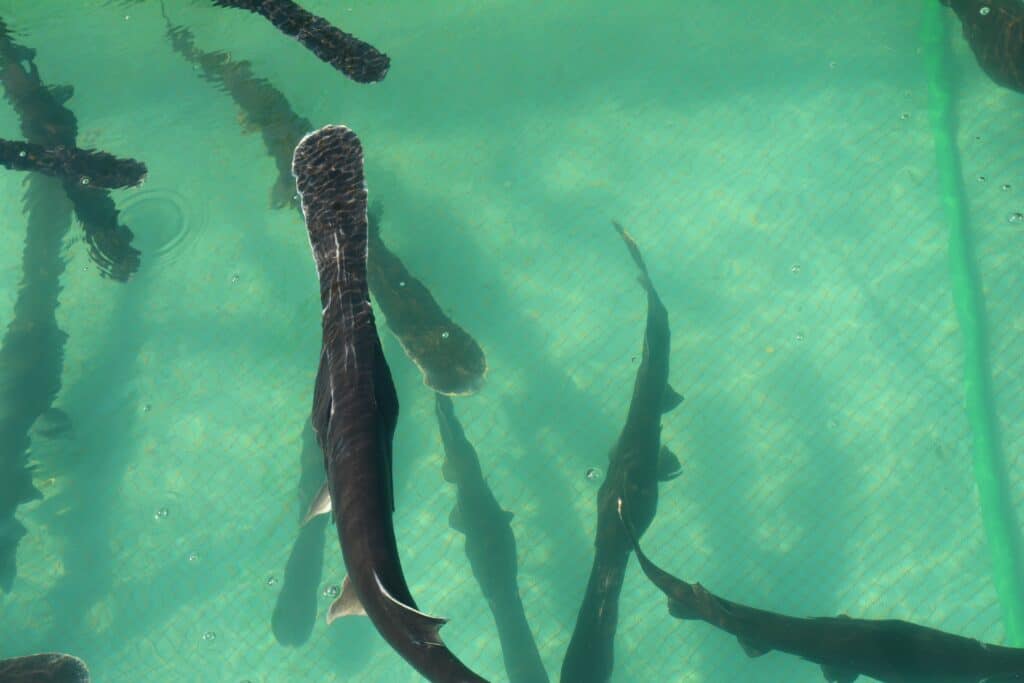
The Mississippi River basin makes up most of the American paddlefish’s current range.
©Radovan1/Shutterstock.com
Major rivers or reservoirs with slow currents and typically deeper than four feet are ideal habitats for paddlefish. Large to medium-sized rivers, bayous, and lakes with backwaters make up most of their habitats.
The Mississippi River basin, home to 22 U.S. states, makes up most of the American paddlefish’s current range. They can be found from New York to Montana and south to the Gulf of Mexico. The Red River, Big Cypress Bayou, Sabine River, Trinity River, and the San Jacinto River were historically home to paddlefish in Texas.
Paddlefish vs. Spoonbill: Diet
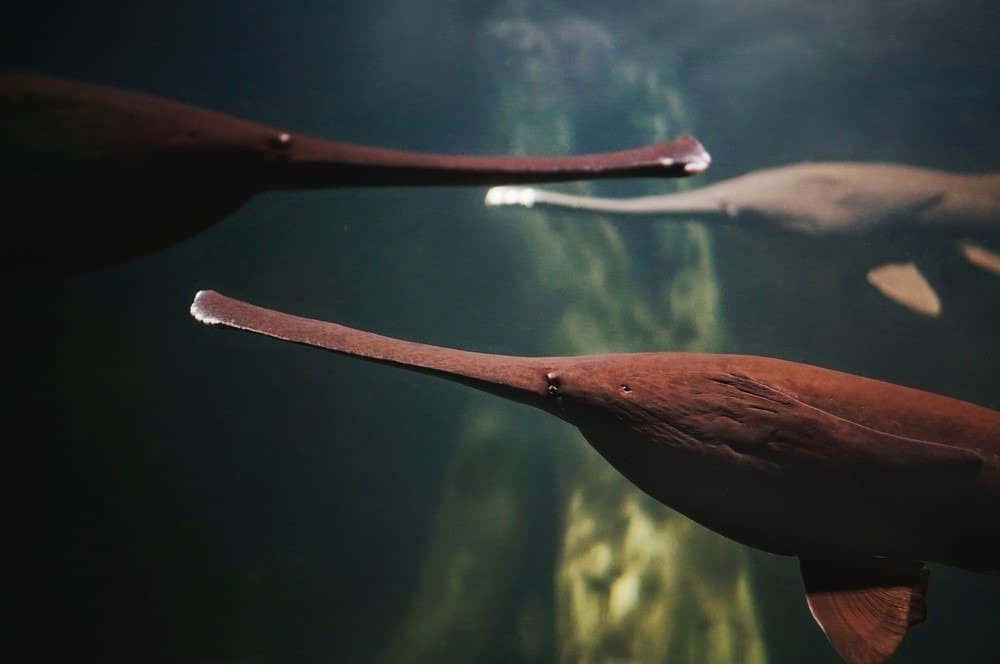
The primary diet of the paddlefish is zooplankton.
©Marina Veder/Shutterstock.com
Paddlefish consume a variety of foods depending on their environment and the season. Most paddlefish eat zooplankton, while some are planktivores and insectivores. They have also been observed eating tiny fish, bug larvae, and small insects. Their primary diet appears to be zooplankton, with Mayfly naiads and water fleas as their favored prey.
Paddlefish are filter feeders. Although mature fish don’t store anything smaller than 0.007 inches long, they take everything from the surrounding water and sieve it through their filter-like gill rakers. They consume a lot of aquatic insects due to their feeding habits, and many paddlefish vigorously chase this kind of prey frequently.
Paddlefish may actively choose the food they want to eat even though they feed while swimming with their mouths open. Per the size and availability of their prey, they frequently alternate between filtration and active selection.
Can You Eat Paddlefish?
Paddlefish are known for their delicious caviar. American paddlefish caviar is made from the eggs of the paddlefish roe. The silvery grayish pearls of this caviar have an earthy flavor, reminiscent of the American rivers. It is important to note that paddlefish eggs are highly prized as caviar. People will pay up to $7.00 in some locations for a little mouthful of paddlefish eggs!
Paddlefish have been present in North American seas for over 300 million years and have developed a reputation for being difficult to catch. However, if you’re fortunate enough to catch one of these amazing beasts, you can eat it and will love every bite if the meat is properly prepared.
Although paddlefish is most frequently consumed as steaks, alternative preparations yield delectable dishes, such as stews and curries, and as an ingredient of gumbo or jambalaya. While paddlefish can also be consumed raw, it is not advised because it often has a rubbery consistency when cold.
Paddlefish vs. Spoonbill: Population
Since 2004, the IUCN has designated the American paddlefish as vulnerable due to the species’ declining populations and destruction from its former habitats in Pennsylvania, Maryland, New York, Lake Huron, and Ontario, Canada.
The narrowing of rivers and changed flow brought on by channelization and wing dykes have destroyed essential spawning and nursery habitat.
As previously mentioned, the Chinese paddlefish was officially declared extinct in 2020. Its numbers were decimated by overfishing in the 1970s when more than 25 tons were taken out annually. Their populations were divided in half by the construction of the Gezhouba Dam in 1981, which also interfered with migratory patterns and upstream breeding.
Up Next:
Thank you for reading! Have some feedback for us? Contact the AZ Animals editorial team.

